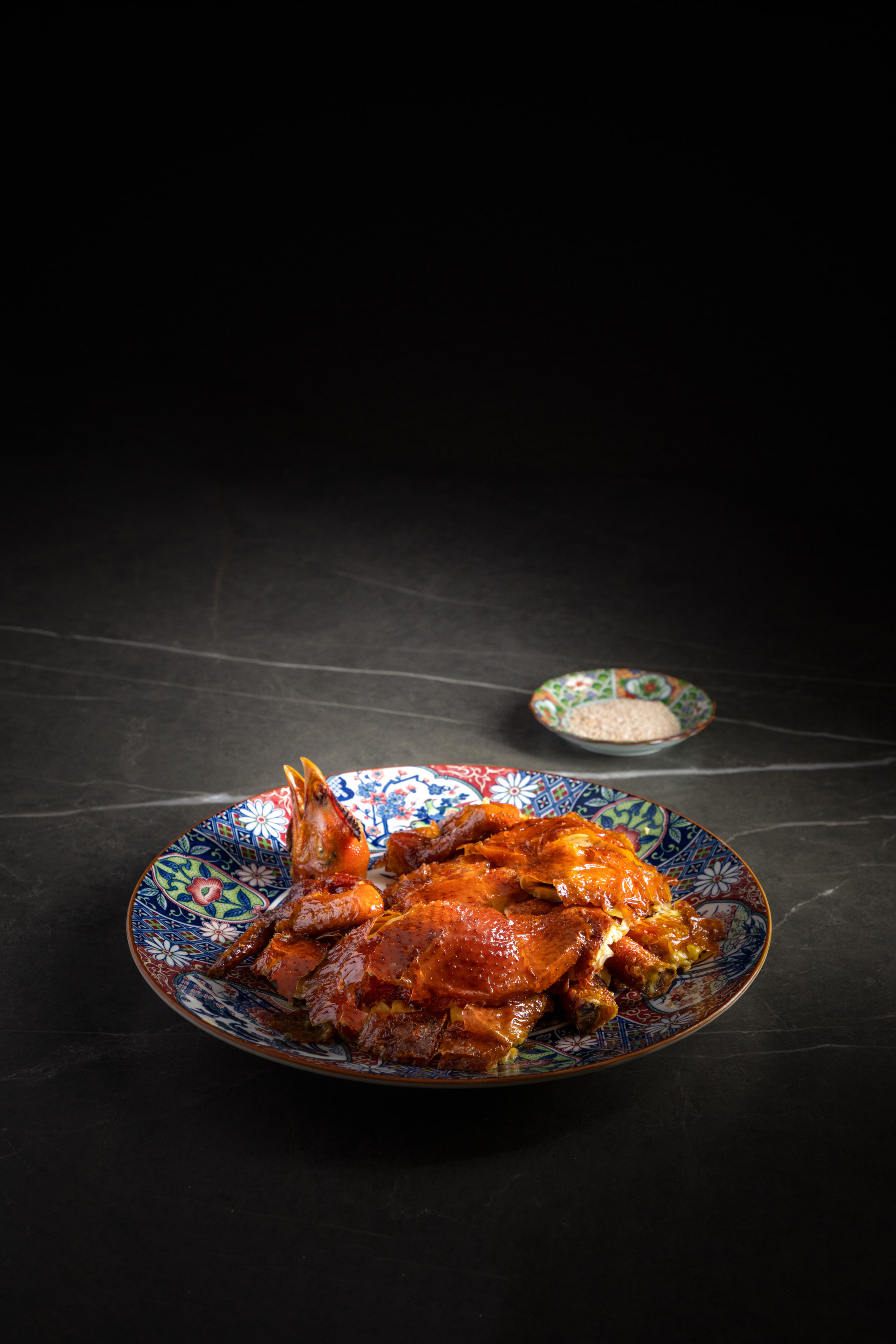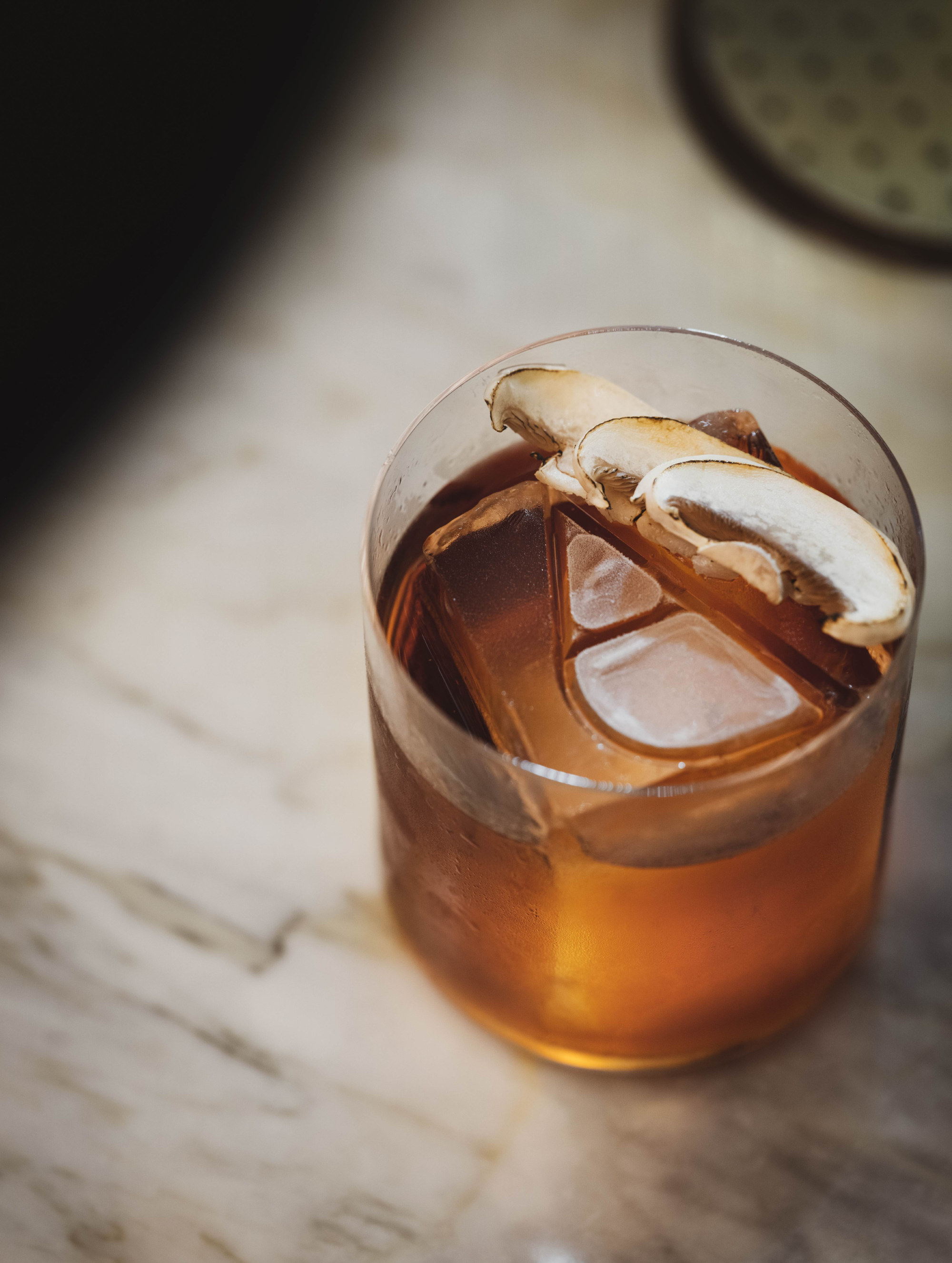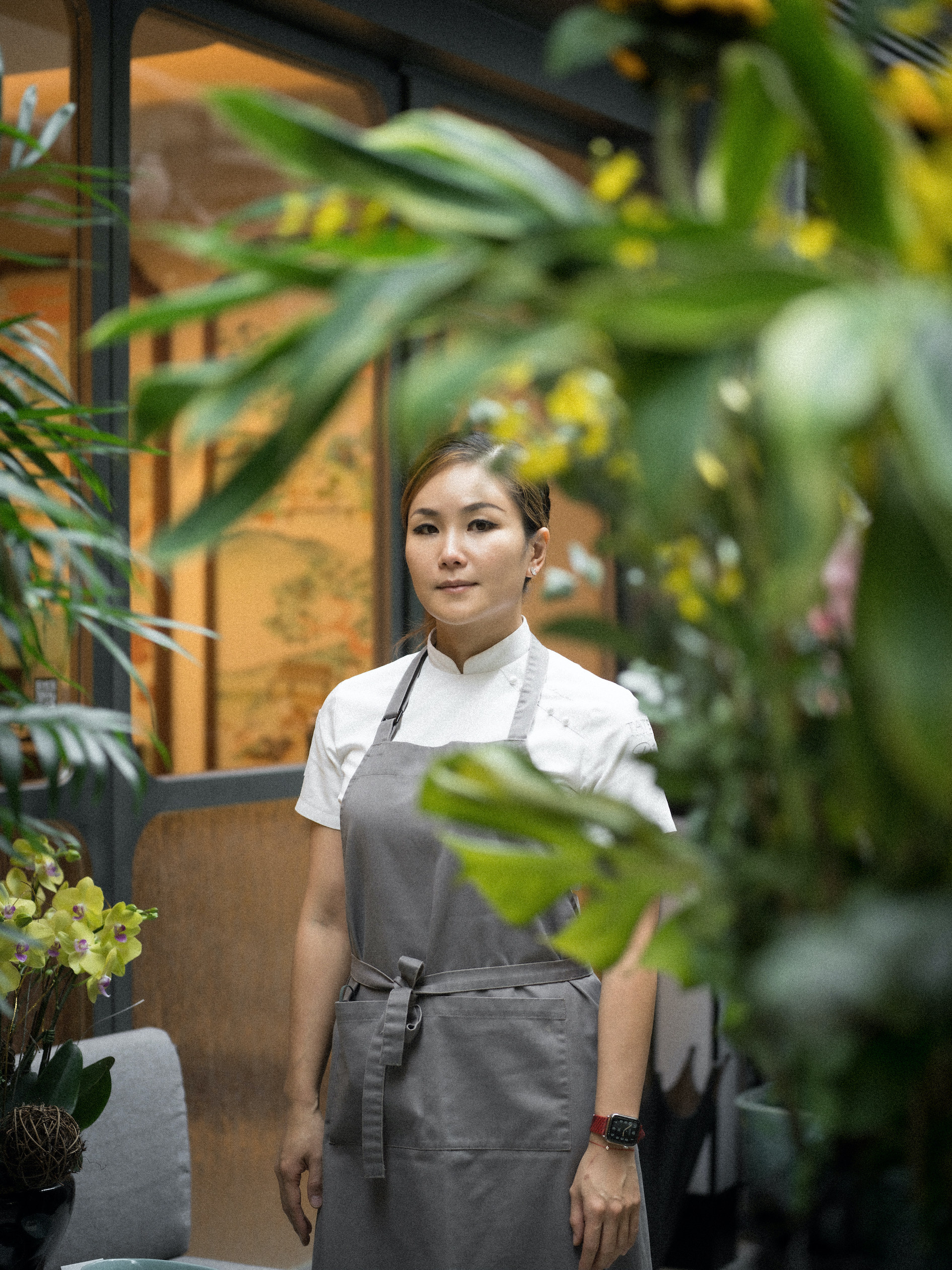
- In Hong Kong ‘local’ is hard to define. We look at some of the chefs exploring the city’s culinary identity using local ingredients and twists on classic dishes
When it comes to food, how do we define what is native? Especially in a place like Hong Kong – a city of immigrants that imports most of what it eats – what can be considered local is tricky to pinpoint.
What we eat also changes over time, so identifying what is representative of a culture’s cuisine depends on when the question is being asked.
The past few tumultuous years, which have seen the city battered by social unrest and the Covid-19 pandemic, have sparked a deeper exploration of Hong Kong identity, and this is reflected in the city’s cuisine.
Along with other markers of culture, such as art, film and fashion, gastronomy has focused on the question of what it means to be “from Hong Kong”.

“Hongkongers are navigating various identities, and this is being lived out on a daily basis,” she says. “As the city continues to evolve, these identities will continue to shift and shape the way our current and future generations perceive themselves and others.”
‘Deadly good’ pineapple buns, sukiyaki: entrepreneur’s Hong Kong food picks
Food has often been used around the world as a potent symbol for shared identities, from the 1863 bread riots in Virginia, in the United States, where hungry mothers chanted “bread or blood!”, to the 2007 tortilla protests in Mexico, and British climate group Just Stop Oil throwing tomato soup at Vincent van Gogh’s Sunflowers at the National Gallery in London in 2022.
Hongkongers have used the city’s dining establishments as arenas for the tussle between these various identities in the so-called yellow economy, in which those who supported political self-determination chose to dine at restaurants owned by people who shared their stance.
What constitutes an “authentic” or “true” Hong Kong dining experience can therefore depend on who you are asking. It can also transcend styles of cuisine, and not even be Chinese at all.

“It’s momos at a six-seat restaurant in Jordan and dosa in Chungking Mansions, which are just as much fixtures in Hong Kong.”
For their part, chefs, restaurateurs and bartenders across the city are helping to define – whether consciously or not – today’s understanding of Hong Kong cuisine in various ways.
One way is the use of more local ingredients, often for sustainability reasons, but also to highlight key ingredients that represent the city’s food. “Local” here can be defined in various ways, such as indigenous, locally grown or locally made ingredients.
Argo at the Four Seasons Hotel, for example, has a bar menu inspired by six key Hong Kong ingredients, including black vinegar, XO sauce and apricot kernel.

The bar team has also collaborated with local brewery Carbon Brews to create a beer with ingredients foraged from remote areas around Tai O, a fishing village on Lantau Island.
While disruptions to supply chains during the pandemic compelled restaurants and bars to look for more ingredients locally, choosing where to source produce can also be a political choice.
“Food supply chains are a cultural issue as well as a logistical one,” says Tan. “Relying on other countries for 95 per cent of your food is a major threat to self-determination.
“In an atmosphere where overt political activism is closely monitored and harshly sentenced, I think we’re looking for other avenues to build stronger communities and foster a movement of localism.”
Chef Vicky Lau last year opened Mora on Upper Lascar Row, in Hong Kong’s Sheung Wan neighbourhood, where she serves innovative dishes that pay respect to the soybean.

Soy is an ingredient that has a long history in Chinese cuisine, including Cantonese, and is widely used in home cooking and available in many restaurants. Lau set up her own factory in Chai Wan, in the east of Hong Kong Island, to process soybeans into milk and tofu.
To Lau, Mora continues the story of tofu that began 2,000 years ago.
“By showcasing the versatility and potential of this ingredient we hope we can attract more attention to Hong Kong’s culinary scene and contribute to a positive evolution of Hong Kong’s food culture,” she says.
Since opening The Chairman in 2009, Yip has overturned the standard approach to Chinese cuisine of having an age-old recipe and finding the ingredients to match.

He starts instead with the ingredient, which he hunts down in Hong Kong or further afield in southern China, and employs traditional cooking skills to best display its strengths.
“We’ve always used as many local Hong Kong ingredients as possible,” says Yip, “including chickens, pigs, fruits such as pomelo, and vegetables, plus fish and seafood we get from local fishing boats overnight.
“These ingredients have specific flavours and that’s what we’re looking for.”
The Chairman’s winning of the Asia’s Best Restaurant title in 2019 from the 50 Best Restaurants organisation brought further acclaim for its unique, Hong Kong-centric version of Cantonese food.
Another way in which chefs are offering a contemporary model of local cuisine is through their approach to the dishes themselves.
Compared to a lot of cities in Asia, Hong Kong is not afraid to push the boundaries of what is traditional and new, innovative and creativeVicky Lau, chef-owner of Mora
They are also modernising other dishes from the traditional Cantonese repertoire (which, however, cannot be claimed as a purely Hong Kong cuisine considering it straddles Guangdong province, too) through the use of cooking techniques borrowed from Western kitchens or other regional Chinese cuisines.
Chan’s dishes are now largely traditional but with tweaks in terms of technique and ingredients.
Her char siu (roast pork) is made from top-quality, marbled pork from Japan, and cooked largely in the traditional way, but finished with a honey and maltose glaze on a charcoal grill, which adds a final, unusual, smokiness.
Soggy buns? No thanks – how bamboo steamers are vital for Hong Kong dim sum
At the monthly Good Fortune Club dim sum sessions, she and dim sum chef Winson Yip Chun-man put curry wagyu beef inside taro puffs, and serve crispy fun gwo (translucent dumplings) with supreme broth, which is no longer readily available outside “old-school” restaurants, as “we wanted to bring it back to the forefront”.
While the original iteration of the restaurant was popular with expats and tourists, more local residents are patronising it now that Chan has taken the reins.
“It’s an opportunity to pay homage to a city we consider home, putting a real focus on Cantonese cuisine and giving me the chance to return to my roots – we can proudly say we are a Chinese restaurant with a Hong Kong heart,” says Chan.
At Hong Kong Cuisine 1983, in Happy Valley, he pays homage to the time-honoured recipes of the city’s cuisine with an East-meets-West approach that combines tradition with innovation.

He also set up the kitchen to double as a training academy for young chefs to preserve traditional Cantonese cooking techniques, which he fears are being lost.
While issues around identity have crystallised around a sense of localism in the past few years and nostalgia for what is seen as traditional food has grown, the shift is part of a longer-term trend.
Professor Sidney Cheung Chin-hung at Chinese University of Hong Kong points out that, in the late 1970s, an increasingly wealthy and cosmopolitan population fuelled the emergence of nouvelle Cantonese, with dishes that included exotic ingredients such as peacock, kangaroo or meat stewed in red wine.
By the 90s, with Hong Kong’s return to Chinese sovereignty looming, culinary culture shifted once more.
“Looking for nostalgia and the home-made became popular in the early 1990s, and the related cultural and political influences should not be overlooked,” he writes in his book Hong Kong Foodways, published this year by Hong Kong University Press.

“Hong Kong residents puzzled over how they wanted to position themselves vis-à-vis their identity and their engagement with the mainland. Were they Chinese or Hongkongese?”
Poon choi, a Hakka village dish in which inexpensive ingredients such as dried pig skin, eel, squid, radish and tofu skin are stewed in soybean paste and served in a shared basin, illustrates the shift in Hong Kong food culture.
It also paints a picture of the complexities inherent in defining what is local and traditional.
Although the exact origins of poon choi are unknown, it predates the colonial period and has long been served as a festive food, commonly prepared for ancestral worship rites and wedding banquets by communities in Hong Kong’s New Territories.
It only became well known in urban Hong Kong in the 90s, when domestic tourists visited far-flung historic villages or remote temples.
‘Locally sourced ingredients’: what sustainability means for chef Alvin Leung
“Visiting the rural part of the New Territories is, for urban Hong Kong residents, a journey into their inner selves. This search for a Hong Kong tradition reflects the identity awareness or crisis felt by Hong Kong residents before the handover in 1997,” writes Cheung.
Over the years, poon choi became part of Hong Kong’s greater culinary lexicon. It has now become an important festival food for even those urban dwellers who have no connection to village life.
“It symbolises commensality in Hong Kong society – the importance of eating together,” says Cheung. “It represents ‘traditional’ Hong Kong and the ‘good old days’. But it’s a nostalgia for an imagined past.”
Whether we attempt to define “local” food by looking at where ingredients come from, what cooking techniques are used or the dishes themselves, the definition is an invention. Tradition has leaky boundaries and is always evolving.
Nobu Hong Kong reopens, and more: new fine-dining options in November 2023
It is that evolution in traditions, gastronomy and the city of Hong Kong itself that for Lau keeps things exciting.
“Hong Kong cuisine is characterised by a wide variety of dishes that reflect the city’s history, geography and global influences,” she says. “Compared to a lot of cities in Asia, Hong Kong is not afraid to push the boundaries of what is traditional and new, innovative and creative.
“I would say that’s exactly what makes the Hong Kong food scene unique.”

